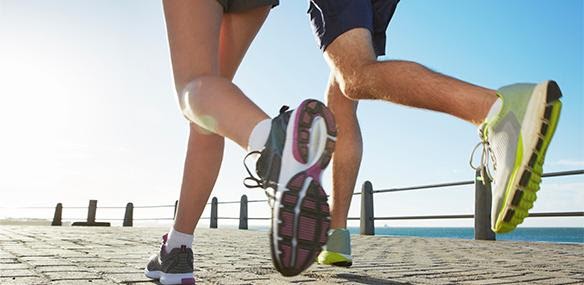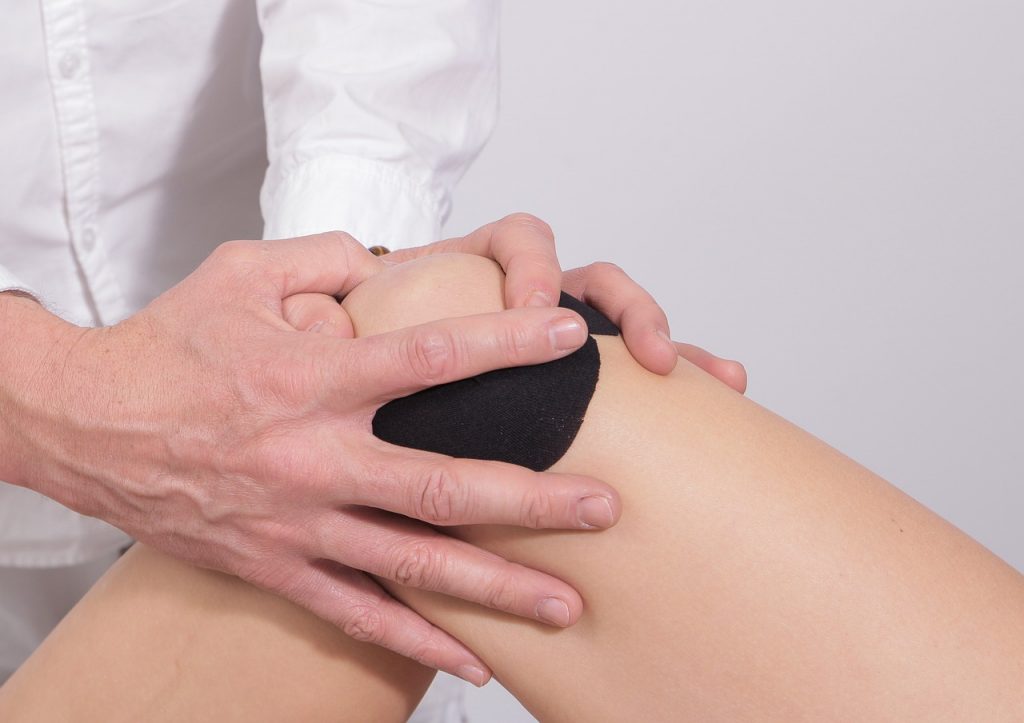Knee pain can occur for a variety of reasons, including overuse. Maybe you’ve taken up pickleball after a significant period of minimal activity. Or suffered trauma causing ligament sprains and meniscal injury (cartilage tears). But a major cause of disability is knee arthritis.
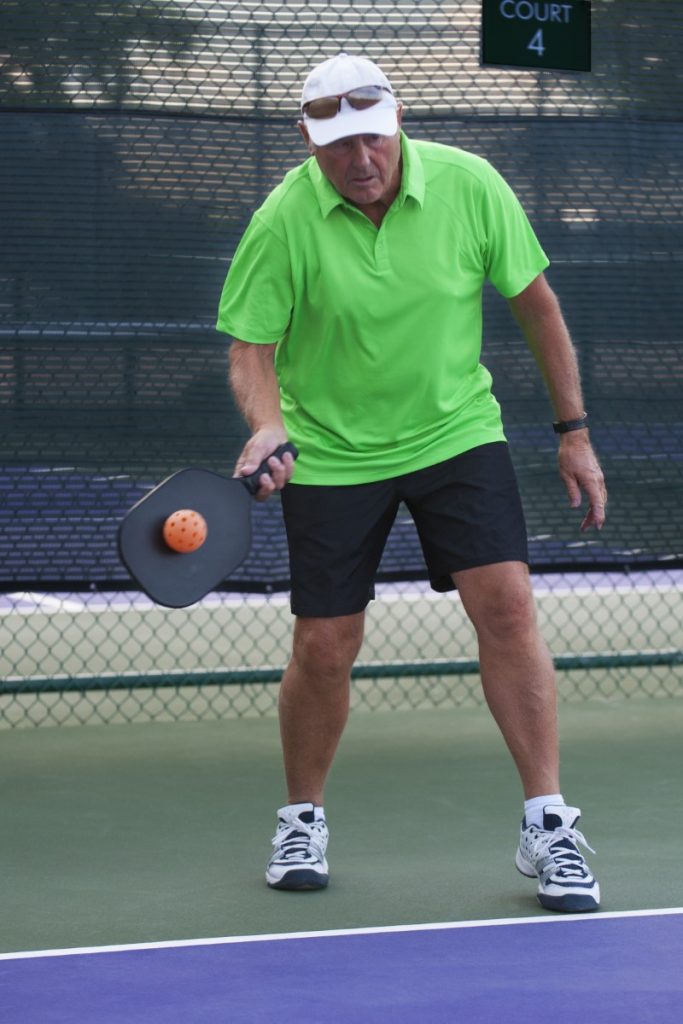
Arthritis is inflammation that affects many joints in our body, causing pain and stiffness, even swelling. The knee joint is one of the more common joints affected. And when it flares up, it makes it difficult to do daily activities.
Osteoarthritis is the most common type of arthritis seen at our clinic. And while there is no cure for arthritis, there are many treatment options that we can offer you, to help you maintain your active lifestyle and manage your pain.
KNEE ANATOMY
The knee joint is the largest joint in the body, a load bearing joint that is mainly stabilized by soft tissues of cartilage and ligaments. The 2 cartilage sections, or medial and lateral meniscus, stabilize and cushion your thigh bone (femur) as it glides and balances over your tibia (shin). Ligaments hold the bones together. A bag surrounds the entire joint, called a synovial membrane, which releases synovial fluid for lubrication and friction reduction. And of course, muscles move the bone segments like a hinge over the slippery cartilage.
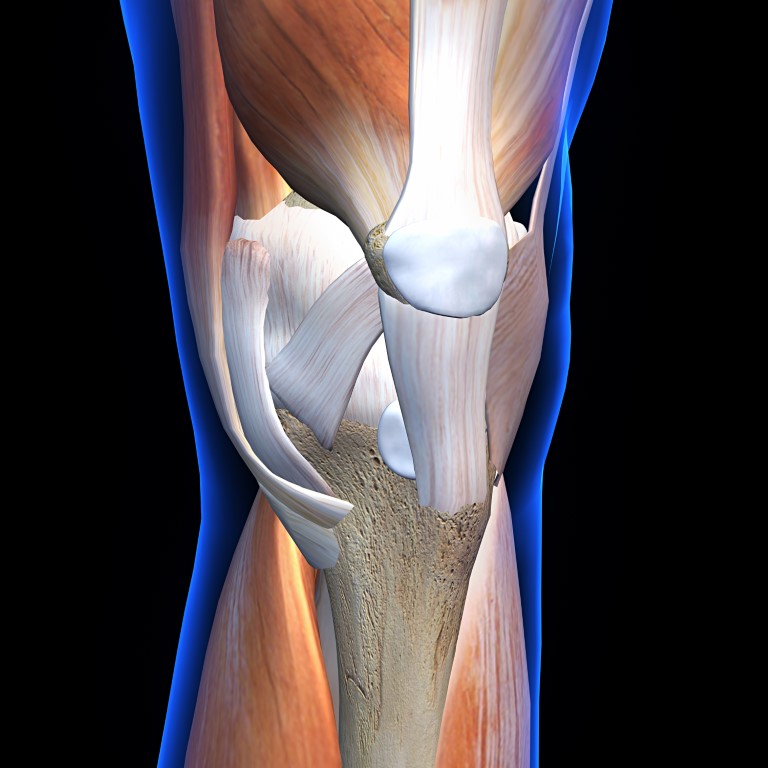
OSTEOARTHRITIS
Osteoarthritis is the most common form of arthritis. It is a degenerative or wear and tear type that I liken to the analogy of rust. It is a breakdown of the joint, specifically the cartilage, that is most commonly seen in adults 50 years and older.
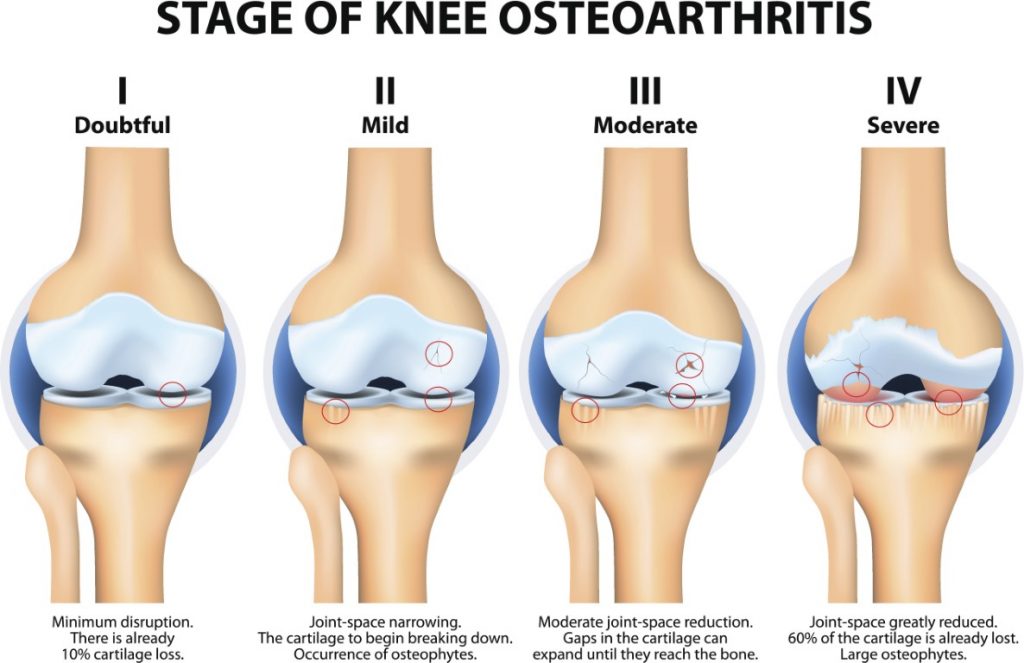
It develops slowly and is generally age related, but new evidence shows that injuries in our youth, may accelerate this gradual wear. Examples include a fracture, like a tibial plateau from skiing, or a meniscal or ligament tear from a sport or work-related sprain, resulting in instability, all potentially leading to the erosion of the cartilage.
Once the cartilage wears away, and that protective cushioning that separates the bones thins, the space between the bones narrows, and pain can slowly develop. When the cartilage is completely eroded, bone on bone contact is the greatest source of knee pain with activity.
SYMPTOMS
Symptoms include pain and inflammation. Typically, the joint is stiff, especially after prolonged rest, like in the morning, resulting in discomfort with bending or straightening. Pain and swelling may develop follow activity. Even changes in weather can increase pain.
Grinding or a feeling of roughness in the joint with movement may suggest bone on bone. You may experience a moment where the knee feels like it is going to buckle from underneath you.
PEDORTHIC TREATMENT
Following diagnostic imaging, like x-rays or an MRI, your family physician or orthopaedic surgeon may suggest anti-inflammatories, cortisone injection, or a lubricant injected into the knee joint (called a viscopolymer injection). Supplements like turmeric or glucosamine sulphate have been known to give some relief. Physiotherapy is an excellent treatment to improve strength and flexibility around the knee joint. Joint replacement surgery is a very successful and high patient satisfaction, last result.
But from a pedorthics perspective, there are many non-invasive options.
- Foot orthotics are clinically proven to be very helpful in positioning the foot to influence the alignment and biomechanics of the knee joint.
- Footwear advice from your pedorthist can be invaluable. Appropriate footwear can enhance the benefit of the orthotics as well as cushion and ease the effort of walking.
- Custom and non-custom knee bracing is also evidence-based and reduces the pressure on the arthritic compartment (region) of the knee.
Pedorthists are experts in foot orthotics and biomechanics. And with a background in kinesiology, we can give you exercise advice to strengthen the muscles around your knee. A thorough biomechanical assessment and gait analysis, and an expertly designed treatment plan by your Canadian certified Pedorthist can get you back on your feet and living a healthy, active lifestyle.
